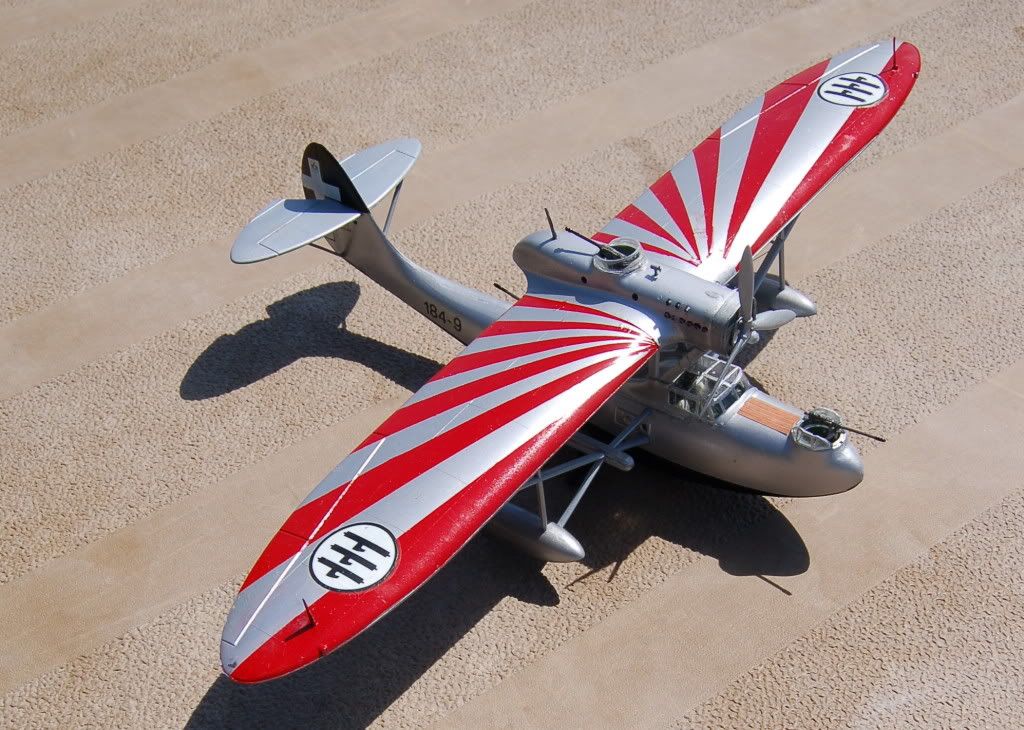Many thanks for the nice comments.
It stands to reason that a hollow, two-piece plastic mast would be reasonably sturdy - if it isn’t warped or otherwise distorted to begin with. I’ve seen photos here in the Forum of some pretty disastrously warped parts that have turned up in recently-produced Heller and Revell kits. The culprits, I think, are three: the age of the molds, the quality of the plastic, and - most important by far - lack of quality control.
Imai was, indeed, one of the most progressive and enthusiastic of plastic kit manufacturers. That odd, slightly-metallic looking plastic was remarkable stuff: it seemed capable of being molded in extremely thick cross-sections, without being subject to warping or sink marks. Oh, what the Revell Constitution and the Heller Victory would look like if their hull halves were of scale thickness…And the trick for molding deadeyes - with holes through them and grooves around them - had the potential of revolutionizing the ship model fitting business (such as it is). It apparently utilized “slide mold” technology that was years, if not decades, ahead of its time. And how often does one encounter the complaint that the spars of a plastic ship kit are too thin?
I’d be interested in an objective analysis, by somebody with access to inside information, of why Imai failed. My guess is that there were lots of reasons, but that one of them was that the company was too adventurous for its own good. In a recent Forum thread Epinniger described an old Imai catalog he’d found: /forums/1159032/ShowPost.aspx . As he points out, one has to wonder whether offering SIX Cutty Sark kits in various media was actually a good idea (especially in the Japanese market, which presumably was crucial to the company’s success). And though I personally applaud the “mixed media” approach, Imai sometimes took it to lengths that were downright bizarre. I once got a look, in a hobby shop, at an Imai H.M.S. Victory. It was about 18" long - comparable to the Airfix and Revell plastic kits. It had wood spars, photo-etched brass decks, and cast, white metal hull halves. The hull halves were quite crude by the standards of plastic kits. And the kit cost about $200 (in the late seventies). I couldn’t see any earthly reason for a rational modeler to buy this thing in preference to the Revell or Airfix plastic kit - which at that time cost about a tenth as much. I suspect that kit was, in terms of sales, a colossal dud. How many such stunts can a manufacturer pull before it starts suffering financially?
Dr. Graham, in his book on the history of Monogram, offers a faint hint of another problem Imai apparently had. Monogram, it will be remembered, distributed a few of the Imai sailing ships in Monogram boxes for a little while. According to Dr. Graham, the original molds for those kits got shipped from Japan to the U.S. The steel from which they were made was so soft that the Monogram production run damaged them; they had to be “repaired” (which must have been quite an expensive process) before they went back to Japan.
I haven’t bought any of the Aoshima reissues; the prices are just too much for me. I can’t afford to shell out a hundred dollars for a kit that I may or may not ever get around to building; my stash is already far too big. (Just ask my wife.) I’m glad these kits aren’t being allowed to vanish into the mists of senile memories like mine, but I have to wonder if Aoshima isn’t shooting itself in the foot with those prices.
A few years ago I did buy the Academy reissue of the Imai “Roman warship,” with the intention of building it with my grandson. (It turned out to be too complicated for that purpose; we ended up with a superb Tamiya dinosaur.) That particular kit was, I think, one of Imai’s earlier efforts, and it has some major problems in terms of accuracy. (The arrangement of the oars just doesn’t make sense.) But as an example of the art and technology of ship kit manufacturing it’s exquisite. The “wood grain” is super, the little deadeyes are amazing, and the parts fit beautifully. Even the injection-molded “sail” is better than most; it has a believable shape and texture, and the edges of it are thinned down so its unavoidably out-of-scale thickness isn’t obvious. And dig those “gold-plated” lions on the base! It certainly looks like Academy retained all that was necessary to manufacture it to Imai’s standards. Whether Aoshima is maintaining those standards I have no idea.
I’d also be interested to find out what, if any, impact the demise of Imai had on other plastic kit manufacturers. It happened within a few years of the time when the three relatively big players in the plastic sailing ship world - Revell, Airfix, and Heller - dropped out. (Pyro and Aurora, the only other firms who ever showed much interest in sailing ships, were gone by then. Revell Germany has produced a few new sailing ships since then, but the last one from Revell of the U.S., according to Dr. Graham’s book, was the Viking ship, which was originally released in 1977. That was 21 years after the company’s first sailing ship, the 1/192 Constitution. Revell of the U.S. has now been out of the sailing ship game more than twice as long as it was in it.) None of the big Japanese manufacturers seems ever to have demonstrated any interest in this particular field. It’s interesting - if a little depressing - to think of a Tamiya Flying Cloud or a Hasegawa whaleship. If Imai’s reach hadn’t exceeded its grasp, would the plastic sailing ship kit be such a thing of the past today? One can only wonder.
